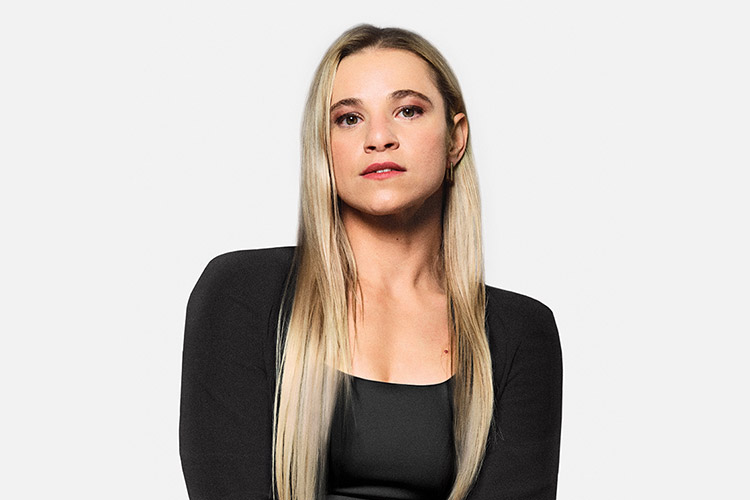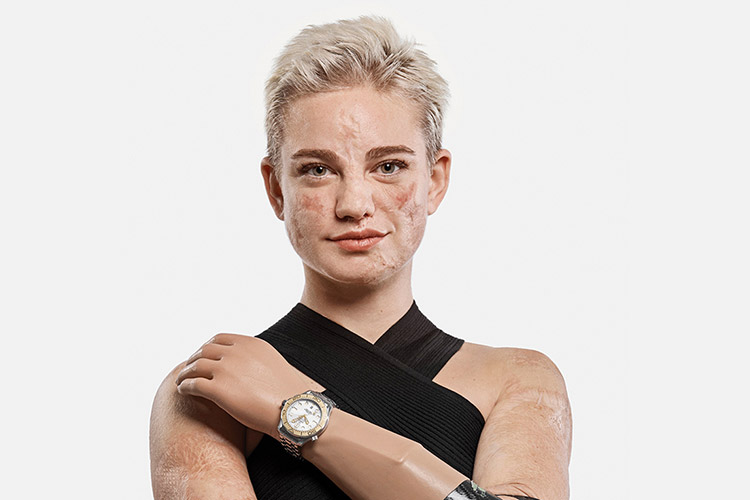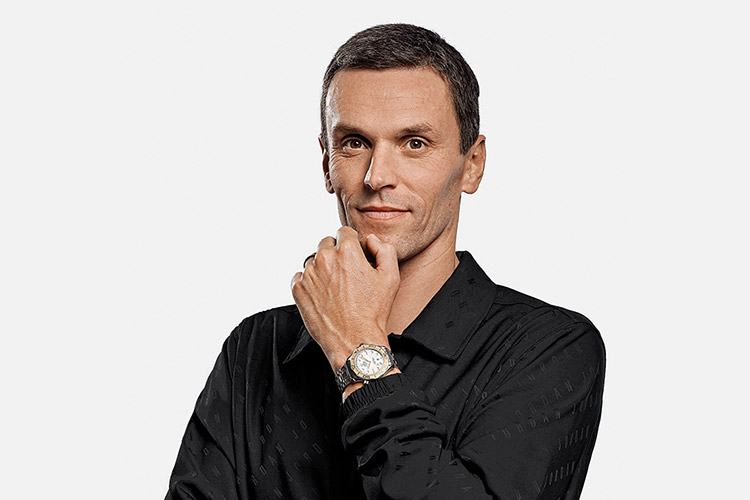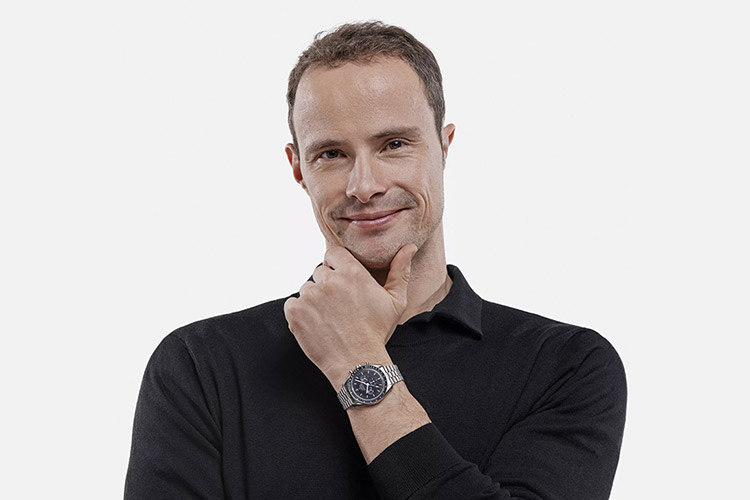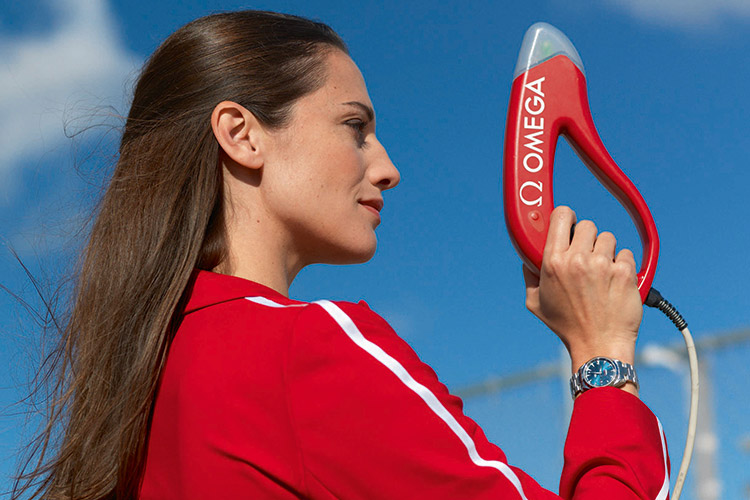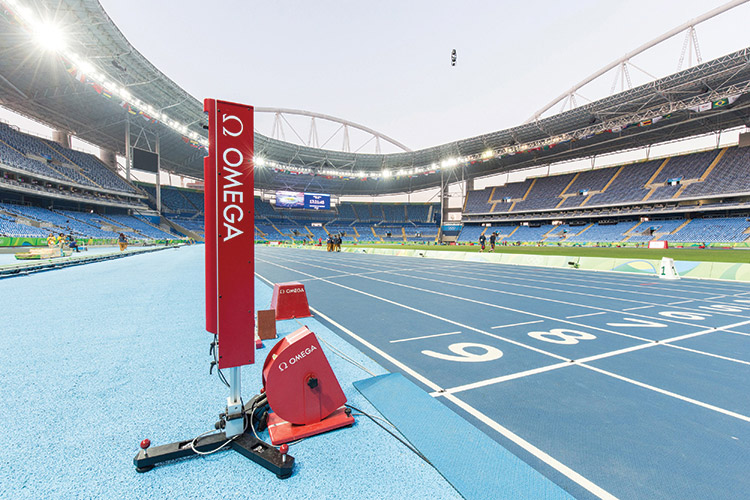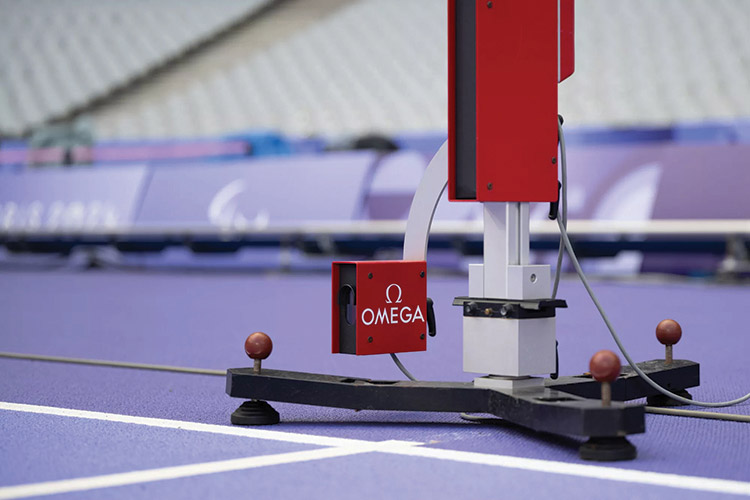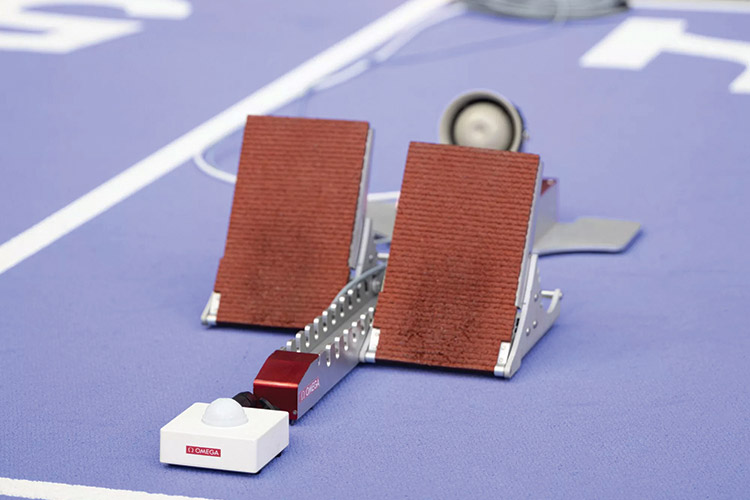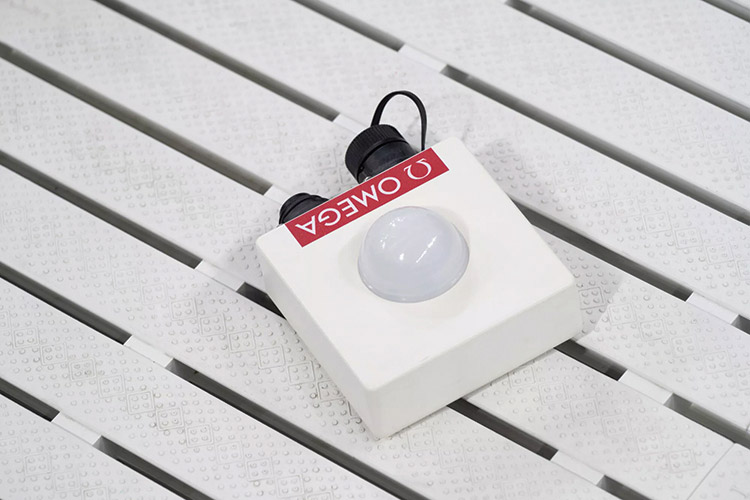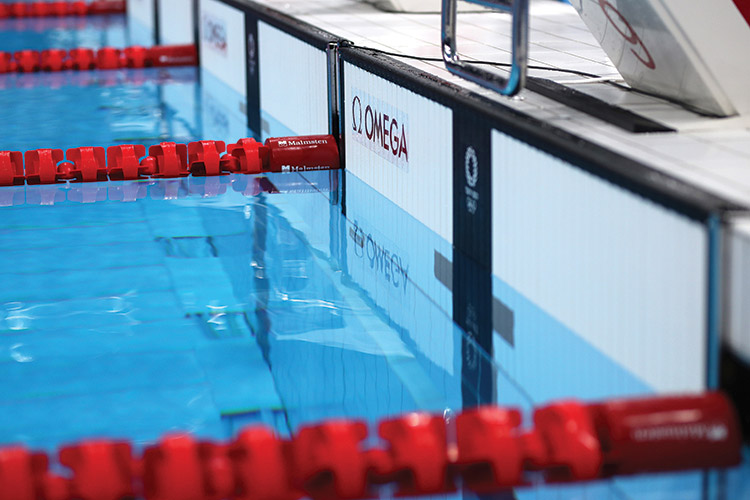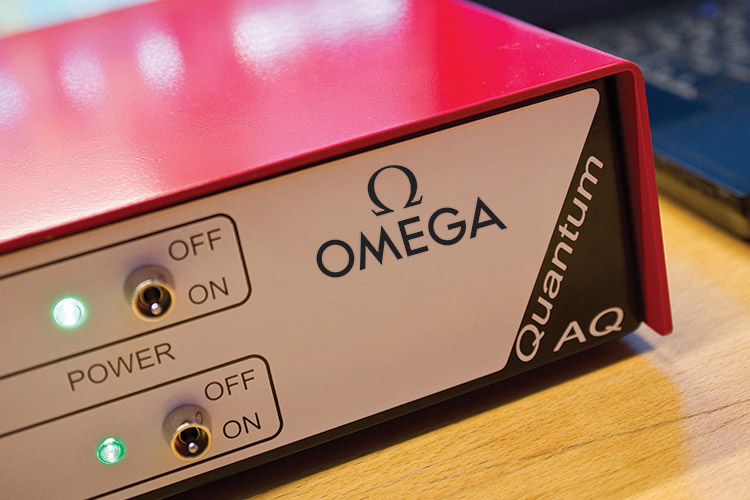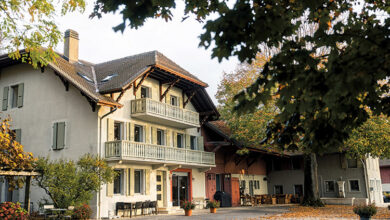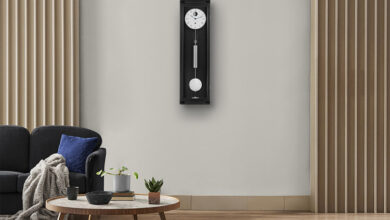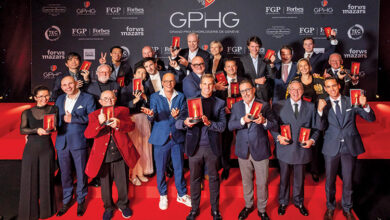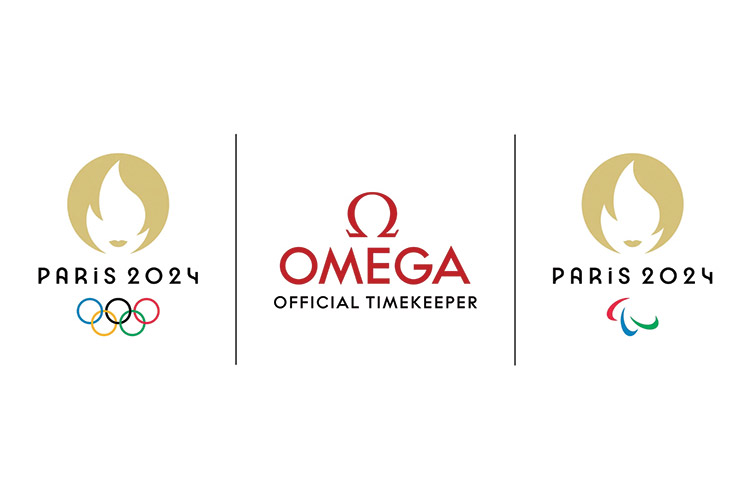
Almost two weeks of competition have now ended at the Paralympic Games. With the medals won, the Official Timekeeper Omega is looking back on another memorable Paralympic year, and the many highlights that defined this Paris 2024 edition. Omega first timed the Paralympic Games in 1992. At this year’s competition, the brand was once again tasked with measuring every second, which included 549 events across 22 different sports. To fulfil the task, the Swiss brand arrived with 240 timekeepers, 150 tonnes of equipment, and 300 trained volunteers to ensure the operation ran smoothly
OMEGA AMBASSADORS’ INSPIRING WINS
Amongst these history-making moments were many inspiring gold medal performances, including those by Omega’s own sporting ambassadors. Hannah Cockroft from Great Britain won the Women’s T34 100m and 800m events, earning the 8th and 9th gold medals of her Paralympic Games career. Alexis Hanquinquant of France won the Men’s PTS4 Paratriathlon event. His gold medal assured back-to-back victories in this event, following the same win at Tokyo 2020. Oksana Masters of the USA won the 18th and 19th medals of her Paralympic Games career, when she claimed victory in the Women’s H4-5 Individual Time Trial and the H5 Road Race in Para Cycling.
Jessica Long of the USA won the Women’s S8 100m Butterfly and S8 400m Freestyle events in swimming. This took her to 18 gold medals in her Paralympic Games career. Marcel Hug of Switzerland won the Men’s T54 Marathon event. This was Marcel’s 4th medal of the Paralympic Games, following the two silvers and a bronze he claimed in other races.
OMEGA TIMEKEEPING TECHNOLOGY AT THE PARALYMPIC GAMES
When it comes to precision, Omega’s high standards never change. This summer, the Swiss watchmaker was tasked with measuring every event at the Paralympic Games Paris 2024 – and the brand fulfilled the role using some specially adapted technologies, along with the very same trusted systems that were used at the Olympic Games just a few weeks earlier.
Two-hundred-and-forty on-site Omega timekeepers were situated within the venues in Paris, supported by 150 tonnes of equipment. Some of the iconic Omega technologies that were used across both Olympic and Paralympic events include the electronic starting pistols; the swimming touchpads, which allow athletes to stop their own time at the end of a race; and the Quantum Timer – the modern version of a stopwatch, which is accurate to one millionth of a second.
With so many diverse sports and athletic categories at the Paralympic Games, it may be surprising to know that Omega employed the exact same timekeeping technology that it used at the Olympic Games. Iconic equipment such as the photofinish camera, the swimming touchpads, and the Quantum Timer all enabled the brand to achieve its reliable standards of sporting precision and excellence. Of course, some unique technological additions were also sometimes required for certain Paralympic Games events.
The Electronic Starting Pistol
An equal start is vital in sports – both at the Olympic and Paralympic Games. But the problem with traditional pistols is that athletes in the furthest lanes hear the shot a fraction later than the closest lanes. Today, Omega’s electronic pistol is connected to speakers positioned behind each racer. When the trigger is pressed, a light flash is emitted, a start pulse is given to the timing device – and most importantly – a sound is played behind each athlete, giving them all an equal start.
Quantum Timer
The modern version of a stopwatch, Omega’s Quantum Timer has an enhanced resolution of one millionth of a second. Driven by a micro crystal component embedded in the timer, the resolution is 100 times greater than previous devices and, with a maximum variation of only one second out of every ten million seconds, it is five times more accurate.
Touchpads
At the end of a swimming race, the famous touchpads positioned at both ends of the pool allow swimmers to “stop the clock” by exerting a pressure of between 1.5 and 2.5 kg (3.3 and 5.5 pounds). It’s the most precise way to measure time in this challenging sport and Omega was responsible for first introducing the technology at the Olympic Games in 1968.
To ensure consistent excellence across the many categories, Omega had also developed or adapted several timekeeping systems for the unique benefit of the judges and Paralympic athletes. These included:
The Starting Light for deaf athletes. Used in athletics and swimming, this flash light system consists of two lamps placed approximately 10 meters ahead of the start. They each emit a bright burst of light at the same time that the electronic pistol is triggered.
The Extra Photocell for wheelchair races was used in all disciplines. Instead of the traditional ribbon on the finish line of races, photocell technology emits infrared beams. As soon as the winning athlete crosses those beams, their unofficial winning time is instantly recorded. Also used at the Olympic Games, Omega recalibrated the photocell system for the Paralympic Games, adding a lower fifth beam to detect the unique body patterns of athletes during wheelchair events. Note that the official times of races are always taken from the photofinish image, which is measured from the middle of the front wheel.
Factored Timing is used across multiple events at the Paralympic Games to create a fair playing field for everyone. Final results take into account the varying impairments of each athlete, so that those from different disability classifications could compete equally against each other. For Omega, this meant recalibrating the timers to run slower for some competitors, with a factor that had been approved by the governing bodies. In sports such as athletics and cycling, the gold medal goes to the athlete with the fastest factored time.
Several unique Paralympic Games sports also gave Omega an extra opportunity for score keeping and official results. These included the precision ball sport of Boccia, as well as Goalball, a team sport specifically designed for athletes with a vision impairment.
Omega will return to its Official Timekeeper duties at the Paralympic Games until at least 2032, when the event will be held in Brisbane, Australia. Until then, Milano-Cortina 2026, Los Angeles 2028, and French Alps 2030 are already on the horizon.
